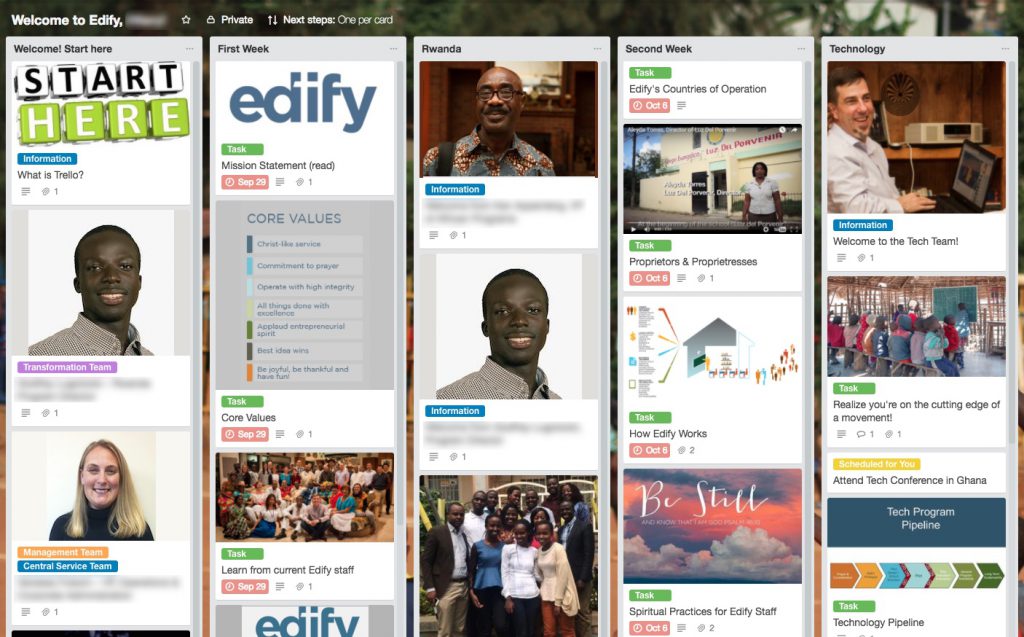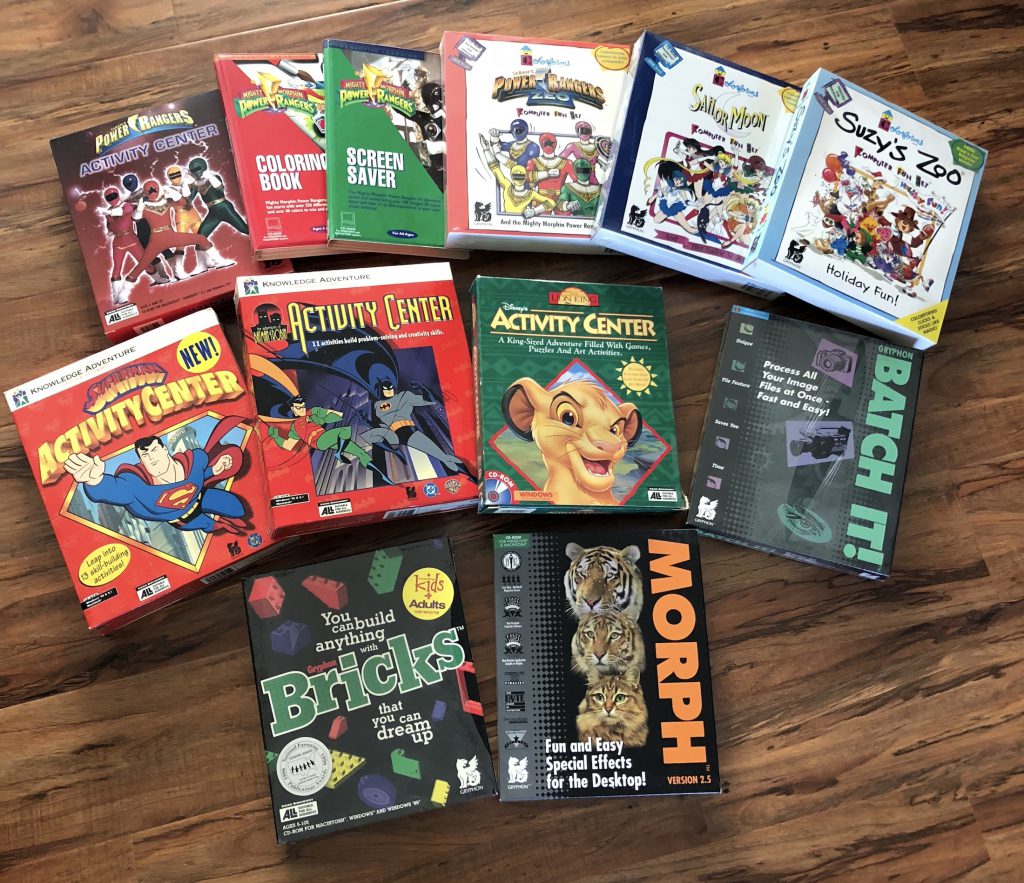Last I wrote, I was just about to start my first day at ProSites, my current employer. That was six months ago, and while I had every intention to do a post here and there to comment on my progress, it just hasn’t worked out that way. Instead, I’ll summarize events and provide a few thoughts.
Changing chapters
After a little more than two years, yesterday was my last day with Edify. God truly orchestrated the strange series of events that led me there and I am so thankful for how I was able to play a part in the growth and development of that organization. Even in two years, the addition of staff, of countries operated in, and programs offered was great to watch. I can also honestly say that I was part of a family and that I have made some lifelong friends as a result.
Tomorrow, I start my new chapter with ProSites as their IT Director. Like any other new job, it will be certainly a whirlwind of new faces, names, practices, and projects. In getting to know my new boss and some of the upcoming plans, I’m excited to dive in.
So, if yesterday was my last day with Edify and tomorrow is my first day with ProSites, then I guess that means today, technically, I’m unemployed. It’s kind of a strange feeling. I wonder what I can watch on NetFlix…
Gryphon Software, a fun look back
This past week, I ended up digging through the attic and ran across a box of software from the olden days of my career. Continue reading
Counting your inboxes
 When you think inbox, the first thing that comes mind is probably the one for your email. Try again. How many different inputs do you have that require your attention and effort to review? Here’s a longer (and not even exhaustive) list: Continue reading
When you think inbox, the first thing that comes mind is probably the one for your email. Try again. How many different inputs do you have that require your attention and effort to review? Here’s a longer (and not even exhaustive) list: Continue reading
Making working from home work
 The commute to my office is over 50 miles and even with my workday starting on the earlier side, it currently takes over an hour to get to the office and almost two hours to get home. Fortunately, I am able to work from home three days a week which helps considerably to maintain my sanity. Since the vast majority of IT work can be performed from anywhere, it’s a decent arrangement for everyone. Continue reading
The commute to my office is over 50 miles and even with my workday starting on the earlier side, it currently takes over an hour to get to the office and almost two hours to get home. Fortunately, I am able to work from home three days a week which helps considerably to maintain my sanity. Since the vast majority of IT work can be performed from anywhere, it’s a decent arrangement for everyone. Continue reading
Getting creative for employee on-boarding
 Working for a small, international, non-profit has many challenges. One of the biggest I’ve encountered is managing all the internal details involved in on-boarding employees and helping new staff get sufficiently oriented regardless of their location or technical competency. One tool I’ve been a fan of for years is Trello and, based on an idea they shared, a colleague and I got to work. The solution created has been in use for almost a year-and-a-half with over two dozen new employees brought onboard since that time.
Working for a small, international, non-profit has many challenges. One of the biggest I’ve encountered is managing all the internal details involved in on-boarding employees and helping new staff get sufficiently oriented regardless of their location or technical competency. One tool I’ve been a fan of for years is Trello and, based on an idea they shared, a colleague and I got to work. The solution created has been in use for almost a year-and-a-half with over two dozen new employees brought onboard since that time.
When a new employee is slated to start, a workflow is kicked off using an internal Trello board shared by a few different people involved in the process. It represents a master checklist of steps that will be needed to complete the numerous necessary tasks. Some of the steps include:
- Confirm that an offer was accepted
- Confirm employee’s contact info and title
- Get a headshot and bio
- Create email and other server accounts
- Create orientation board and account
- Send welcome email with getting started instructions
- etc.
As an operations-minded person, myself, I like to standardize whenever possible. A multi-cultural organization, however, demands acknowledging and accounting for differences in culture. The balance I shoot for is 80/20: 80% standardized and 20% contextualized. We took that into account with our solution. The bulk of the board is the same for all staff and covers the baseline common to everyone. Things like our mission, vision, staff resources, and must-watch or must-read items. Folded into that are lists specific to the team they’ll be joining as well as the country which they’re located. All combined, it’s proven to be a great resource. We also incorporate the feedback of each person that uses it so it can be improved in future iterations.
The best part is that it’s a free service which is always a good thing when the goal is to apply every dollar possible towards our programs. Want to donate?
Remember your future self
 At its most basic, productivity is all about getting as much done as possible in a given period of time. Improving your efficiency is certainly one way to accomplish that; completing a task in less time does let you move on to the next. The problem with that strategy is that you sacrifice the future for the benefits in the present. Whenever I find myself considering a shortcut that I know will have consequences later, I try to think of how I’ll feel and see if it’s still the right thing to do. I refer to it as remembering my future self. Continue reading
At its most basic, productivity is all about getting as much done as possible in a given period of time. Improving your efficiency is certainly one way to accomplish that; completing a task in less time does let you move on to the next. The problem with that strategy is that you sacrifice the future for the benefits in the present. Whenever I find myself considering a shortcut that I know will have consequences later, I try to think of how I’ll feel and see if it’s still the right thing to do. I refer to it as remembering my future self. Continue reading
The Blessing and Curse of the Zeigarnik Effect
![]() In the early 20th century, the psychologist Bluma Zeigarnik studied what became known as the Zeigarnik effect after her professor noticed that a waiter had better recollections of still unpaid orders than ones that were completed (Wikipedia). In these modern times, where considerably more tasks abound, it’s often referred to as ‘open loops’ or ‘dangling threads’ and everyone can relate to one degree or another.
In the early 20th century, the psychologist Bluma Zeigarnik studied what became known as the Zeigarnik effect after her professor noticed that a waiter had better recollections of still unpaid orders than ones that were completed (Wikipedia). In these modern times, where considerably more tasks abound, it’s often referred to as ‘open loops’ or ‘dangling threads’ and everyone can relate to one degree or another.
Whether by nature or by practice, I am personally quite susceptible to the Zeigarnik effect. As an avid GTD‘er I try very hard to capture the various open loops as they come up so I can circle back and address them by providing an update or otherwise following up. That allows me to provide closure and move on to the next thing. Continue reading
A replacement for CrashPlan

Last month, I wrote how CrashPlan is discontinuing their home service and that I had to find a suitable alternative. Backup solutions aren’t the most thrilling kind of software and investigating and evaluating the different options can hardly be considered fun. The complicating fact is that I have an atypical arrangement, or I suppose you could call it a specific set of requirements. I have a server along with other computers at home and another server at my mother-in-law’s along with her computer. Since I’m a firm believer of the 3-2-1 backup rules, I wanted to make sure everything is suitably protected.
Dealing with spammers and robocallers
Sadly, we all have to deal with ‘robocallers’Â and similar undesired and unsolicited calls by telemarketers. I have been remiss in sharing a very decent resource that I’ve been utilizing for our house phone for over two years.

